Pembroke Welsh Corgi is the one the popular dwarf dogs are known for short, foxy appearance.
They belong to the “Herding” category with originally being the shepherd dogs of the Flemish and Viking weavers.
They have short, sturdy legs and a long body with bat-like upright ears giving them a unique look.
They are well-mannered small dogs with high affection level and cuddling nature.
These loving, happy-go-lucky dogs are very energetic, fearlessness and independent.
Anciently, Welsh Corgis were called dwarf dogs due to their stout and short appearance.
These breed of dogs are favorite of the current Queen of England, Elizabeth II.
Table of Contents
Quick Facts

Average Weight: Between 24-30 Pounds
Average Height: Between 10 Inches to 1 Foot
Life Expectancy: 12-15 Years
Dog Group: Herding Dogs
Colors: Black & Tan, Fawn, Red, Sable, Black & White
At A Glance
- Size (2/5)
They are short in height growing no more than a foot at the shoulders.
This size aided them during their shepherding days, as they could nib at cattle’s legs and duck away from their kicks.
They don’t need big furniture due to their size thus eliminating the need for different size beds when they grow up.
One advantage of the size they have is they can remain lap dogs for their whole life.
- Affection Level (4/5)
Pembroke Corgis are an affectionate breed with a friendly disposition to all, be it humans or other animals.
They love to be with their owners and in being a part of a family.
They display a great level of likeability towards everybody with special preference given to their family.
They also like to cuddle a lot as a sign of affection being shown.
- Apartment-Friendly (4/5)
They are a good choice of pets for apartment lovers due to their small size.
Hence eliminating the need for bigger spaces to roam or play.
Even then they need spaces to exercise and play daily or they grow overweight.
As long as their owners fulfill the daily exercise needs of their dogs, they are content wherever they live.
- Cold Weather Tolerability (4/5)
They have a good double fur coat that provides protection during low temperatures.
They have a soft undercoat of hair with a hard hair coat on the top that acts as insulation for them.
They originated from the colder and harsh northern regions of the Europe continent.
Since then they have adapted well to cold weather.
- Hot Weather Tolerability (3/5)
The double coat that helps them during cold time isn’t useful during warm weather.
Corgis tend to overheat due to the insulating nature of their fur.
There are many ways to help the dogs remain cool in summer, and you must know what simple tricks you can do to keep your dog cool.
- Barking Tendencies(3/5)
They tend to bark at strange people or objects.
This is due to their alert and protective nature which was acquired due to their former shepherding work.
They have a loud bark which they use for alerting against any sort of conceived threat.
They can be trained easily to keep in control their barking tendency by properly training them and getting new experiences.
- Cat-Friendly (3/5)
Corgis and cats tend to get along very well especially if the cat has a lively nature.
Most of the time Corgis chase everything that moves so there is a chase most of the time.
If they are introduced properly and correctly to each other at an early age they become playmates.
Sometimes training is required so they don’t see cats as their enemies but as a part of their family.
- Dog-Friendly (3/5)
They are friendly towards other dogs often bonding well with them.
They are suspicious of strange dogs as it was part of their shepherd work to keep strange animals away from the herd.
Mostly they forge friendship often playing with other dogs irrespective of their breeds.
In some cases, owners need to provide training and exposure to ensure they are no hostile behavior.
- Exercise Needs (4/5)
They have high energy levels so the need for plenty of exercises.
Mostly they need around 30 minutes of exercise daily.
The history of being from an active background demands them to have exercise daily.
If not given enough exercise they grow overweight.
- Grooming Needs (3/5)
They are easy to groom with not much maintenance is required except basic grooming.
Pembroke Corgis have a double coat which makes them shed their undercoat once a year and hence they are heavy shedders.
Use of a pin brush is recommended for daily grooming.
Their thick double coat is easy to maintain, with brushing it daily is sufficient for it.
Unless brushed they shed their hair as another way of removing them.
Especially during summer, frequent brushing helps them lose their undercoat thus keeping them cooler.
It also allows air to flow near the skin and release heat.
Also, clip their nails once a month unless they wear it out themselves.
Brushing and checking their ears should also be done regularly to avoid allergies or illnesses.
- Playfulness (4/5)
Dogs of this breed are very playful and love to be busy and learn new things and tricks.
Most of them get along with other dogs and other animals especially if they play any games.
They are one of the most active and playful dogs in the dog parks with always being ready for a game.
They have no qualms in doing their daily exercises as long it is like a play to them.
They are advised to be raised in active households where someone is there with them to play.
- Trainability (4/5)
They are easy to train as they have in their nature to obey commands.
In the past, they were bred for the reason that they followed their owner’s commands.
They are smart but need a firm hand in case you are training puppies or rescue dogs.
House potty training can be constant and owners can reward them with treats whenever they successfully follow their task.
- Intelligence (5/5)
Corgi are considered to be an intelligent breed that obeys commands easily.
They have an independent nature which is why sometimes they make their own rules.
They love to be center of attention and thus love to perform tricks if learned any.
They can curious and can be stubborn sometimes but owners need to assert their wills if necessary.
There are many competitions in which they are known to show their intelligence.
- Mouthiness (2/5)
They have a lesser tendency to bite or chew when compared to other breeds.
Though they are known for nipping the heels of the children play with them, it is reminiscent of their shepherding days.
Though the nipping problem can be curbed if they are trained from early on.
They mostly bite when provoked, angered or when they feel unsafe towards that person.
- Price Group
They cost an average of in between $600 – $1000.
Though adopting a pet is cheaper than buying one, but many people feel that breeders have better puppies than adoption places.
Pembroke Welsh Corgis cost less than Cardigan Welsh Corgis due to more availability.
Major factors of cost are breeder’s location, whether purebred or not and the pedigree.
Before buying or adopting people are advised to ask for medical records if any.
About Pembroke Welsh Corgis

They are a very popular breed of dogs with their owners being the royalty themselves.
They are more popular than the other breed of Corgis known as Cardigan Welsh Corgi.
They are friendly, affectionate and loving dogs who used to be shepherd dogs in the past.
They are comfortable even in apartments and thus a good choice for apartment dwellers.
They have a double coat of hair on them with distinct fur shapes on their backs called “fairy saddles”.
They are achondroplastic meaning they are a true dwarf breed and not developed to be short like other breeds like Pomeranians for example.
They are very agile and fast on their legs and have good stamina.
They are intelligent dog breed that needs an active daily routine to maintain their body and to prevent them from being obese.
Where Pembroke Welsh Corgis Came From?
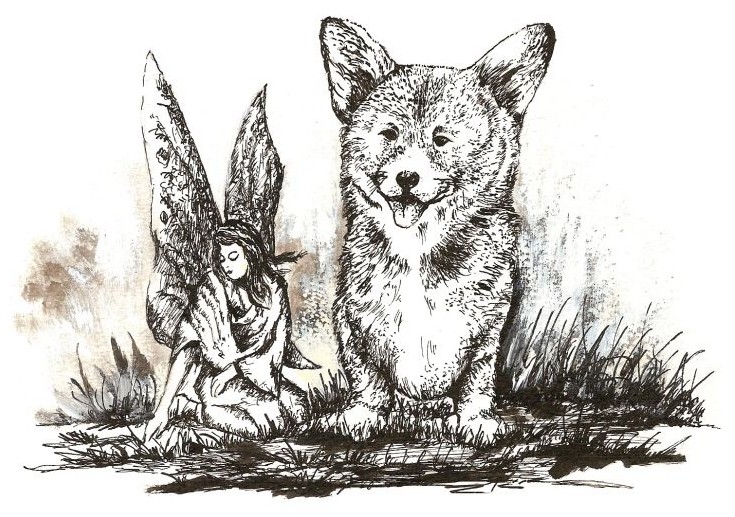
Their country of origin is said to be Wales with two popular theories on their origin.
One fairytale legend tells that two children found few Corgis while playing near a forest.
They were considered a gift from fairies and elves in the past and helped in raising and herding of cattle.
One theory is that they are descendants of dogs that came with Flemish weavers when they moved to Pembroke shire in Wales in the 12th century.
Another is they are a crossbreed between native Welsh Dogs and Swedish Vallhund brought in the 9th and 10th centuries by Vikings.
In both cases, the dogs were bred with native dogs with most of them retaining their Spitz-like characteristics.
They used to work as shepherd dogs with herding and protecting cattle.
They adapted as such to their advantage, thus their modern avatar.
Size
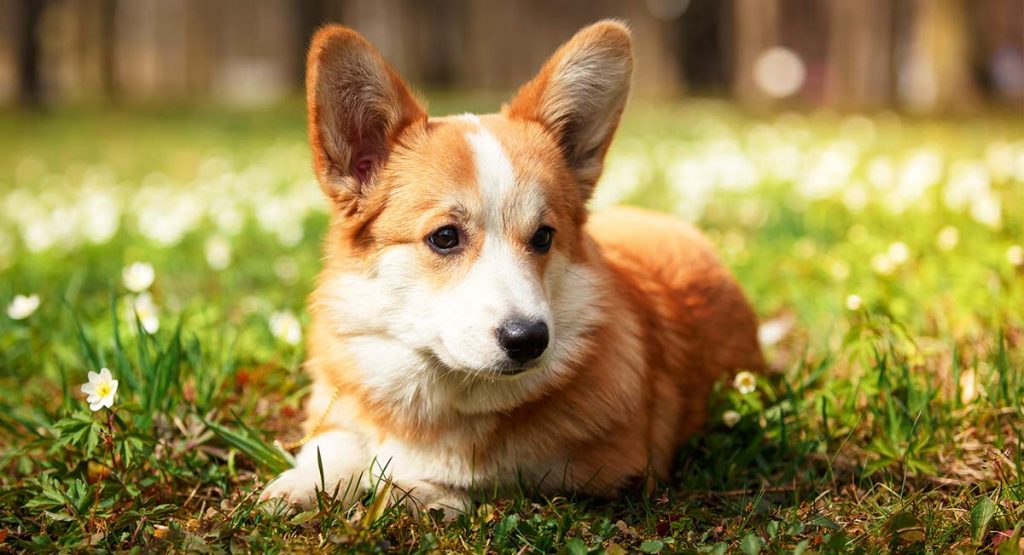
They are small dogs with the adults growing up till 10-12 inches.
They mostly reach their full height within the first few years.
They are original dwarf dog breed with short, powerful legs and long body.
Trainability
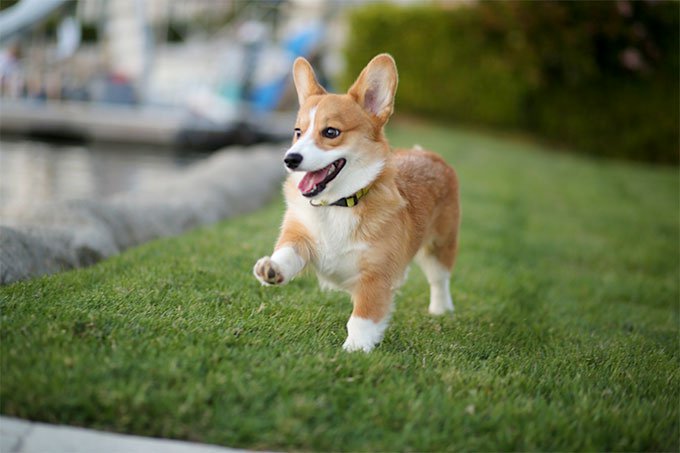
They are easy to train as they readily comply with the orders or commands of their owners.
They have a natural desire to please others hence it makes it easy to train them.
Their intelligence also plays a huge role in this as they understand the chain of command.
For most of them, food is the best motivator to learn anything, owners are advised to reward them for successful task completion.
Grooming
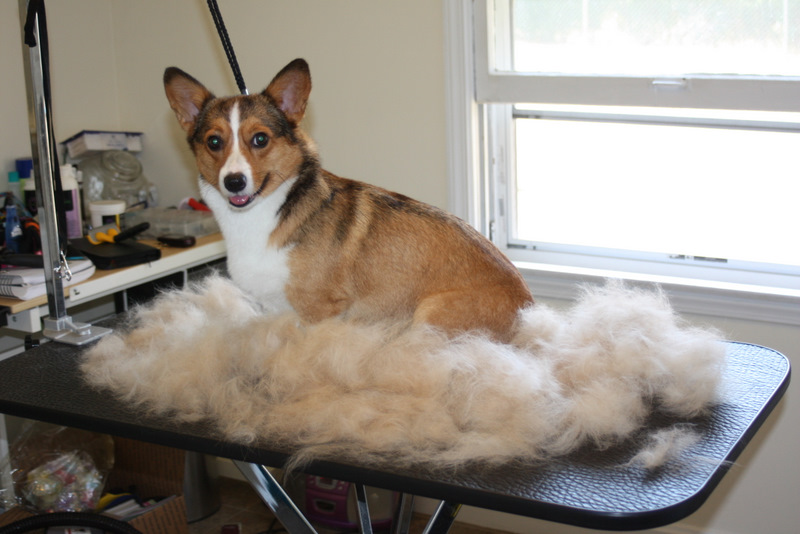
They are considered less maintenance pets with daily brushing of their coat a necessity.
They are heavy shedders with double coat providing lots of hair unless brushed daily.
Brushing and anti-flea treatment are needed for the pet to be allergy free.
For dogs, human shampoos aren’t suitable at all.
You can easily make a dog shampoo at home by following simple methods.
Their nails and ears should also be cleaned on a regular basis to avoid dirt build up.
Brushing of teeth should also be done to prevent plague and gum related issues.
Common Diseases
Corgis are generally a healthy breed but some diseases affect their breed a lot. Here’s what this breed is prone to:
TARGETING BONES:
- Hip and Elbow Dysplasia:
In this, the bones are deformed thus can’t fit properly in the socket of the joint.
Due to misshapen shape, the joint isn’t meeting properly thus producing rubbing and grinding instead of normal smooth motion.
It can cause lameness and pain in that leg with no outer discomfort visible.
It is inherited and people are asked to check the dog or puppy for this condition before buying or adopting.
X-Ray is the best way to find out the condition with surgery the best method to correct it.
- Intervertebral Disk Disease:
Due to their long back and short legs, they have the risk of rupturing or bulging their discs between the vertebrates.
This causes pain, nerve damage, and paralysis as it affects the spinal cord movements.
The signs are hunched backs, unsteadiness, trouble walking or climbing, weakness and paralysis.
In severe cases, surgery and wheelchair are necessary while in mild one’s medications and treatments are required.
- Degenerative Myelopathy:
In this disease, the lower spinal cord of dogs is affected that limits their movements.
The nervous and supportive tissues of the spinal cord are affected resulting in weak and disabled hind legs or paralysis.
There is no available cure at the present but rehabilitation, exercise, acupuncture, and dietary supplements are helpful to affected dogs.
TARGETING EYES:
- Cataracts:
This affects dogs in old age in which opacity of eye lens increases.
Signs are cloudy eyes and poor vision that increases with time.
Surgery is used to remove cataracts and restore the vision of dogs.
- Progressive Retinal Atrophy (PRA):
In this inherited eye disease, the dog slowly goes blind by a general deterioration of the retina.
Symptoms are night blindness, and as later it progresses to day time blindness.
It isn’t curable as of now and a genetic test is a way to spot this condition.
- Distichiasis:
Extra hairs grow inside the eyelid in this condition and rob on the eye surface.
This is an inherited disease can cause corneal ulcers and chronic eye pain.
Professional treatment is needed to remove the abnormal hair as any mistake can cause the disease to aggravate.
- Retinal Dysplasia:
Abnormal development in retina happens in this condition.
Surgery is the best option as sometimes retinas detach and cause blindness.
- Lens Luxation:
It affects the ligaments of the eyes by weakening or breaking thus the lens dislocates from its position and is very painful.
Falling of the lens prevents proper eye fluid discharge with glaucoma as the outcome.
Signs are red or swollen eyes, trembling irises, and weird looking lens.
Surgery should be done to fix it as the progression of this condition can lead to blindness.
TARGETING BLOOD:
- Von Willebrand’s Disease:
The clotting process is affected by this inherited disorder and is common in dogs.
The protein responsible for clotting isn’t produced and as result blood can’t clot properly.
Nosebleeds, bleeding gums, prolonged bleeding, and occasional blood in stool are the symptoms.
Though it has no cure, treatments are available to manage this bleeding disorder condition.
TARGETING WEIGHT:
- Obesity:
They are most susceptible to overweight with overeating being a major concern of the owners.
Most vets advise the owners to control restrain in feeding their dogs.
Regular exercise and a controlled diet are the main ways of preventing it.
Feeding
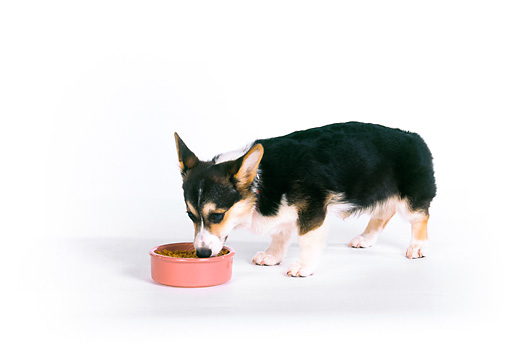
Their feed should mostly consist of proteins and fats to keep up with their energetic selves.
They need an estimated of around 750 calories per day with adults requiring more calories than puppies.
They should have a low to medium carbohydrate ratio in their food which should also be grain free.
Fillers, preservatives, by-products along with wheat, soy and corn aren’t advisable to feed pets.
Feeding should be regulated and portions should be equally divided throughout the day to avoid over-feeding.
It is very important to know what should not be included in the diet of your pet, there is a high chance you are including one of these 50 dangerous foods for your dog which can cause serious problems
Suggested: Senior Dog Food
Vaccination and Care
Every pet needs vaccinations and boosters to stave off any preventable fatal illness.
To ensure that these dogs remain healthy and strong, owners should vaccinate them regularly as per the schedule given by the vets and doctors.
For Puppies:
Age Vaccinations
6-8 weeks Distemper, parainfluenza
10-12, 14-16 weeks DHPP
12-24 weeks Rabies
1 year DHPP, Rabies
For Adults:
When required Vaccinations
Yearly Bordatella
Yearly Rabies
Yearly Coronavirus
Yearly Lyme disease
Suggested: Guide To Dog Vaccination
Monthly Expense Estimation
The monthly expense of keeping a Corgi is around $85 – $90 including everything.
Expenses in the initial year would be more than the later years.
There are some regular costs like vaccinations and boosters along with food.
Equipment and other casual yet important things add to the cost of keeping the vet.
Also, some extra money would be spent in case of any medical emergency or unforeseen incidents.
Behavior With
Children
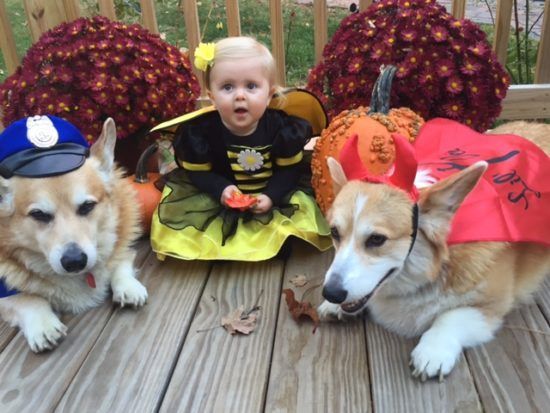
Due to their wolf like structure people often have a question that are corgis good with kids?
This cheerful and energetic dog breed is a kid-friendly one.
They love to play games with children and their boundless energy makes sure they are active in every game they play.
Their short and sturdy body is strong enough to handle tight hugs and pats from the kids.
Though Corgis need to be trained as some dogs are reported to nib the heels of children while playing.
Dogs
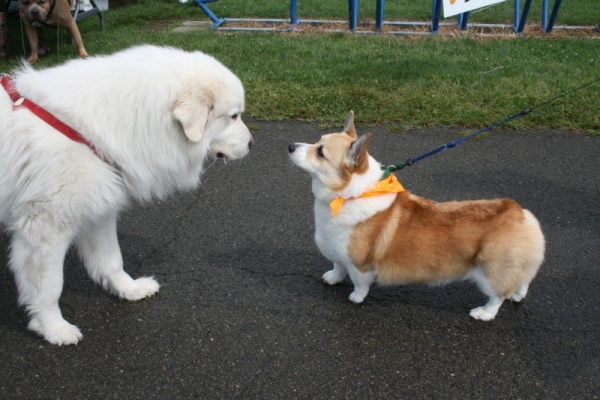
They get along with other dogs as long as they aren’t strange and a proper introduction is there between them.
This playful breed loves to play with other dogs and hence they bond and form friendships fast.
Due to their herding nature, they might act aggressively to unknown dogs or animals.
Cats
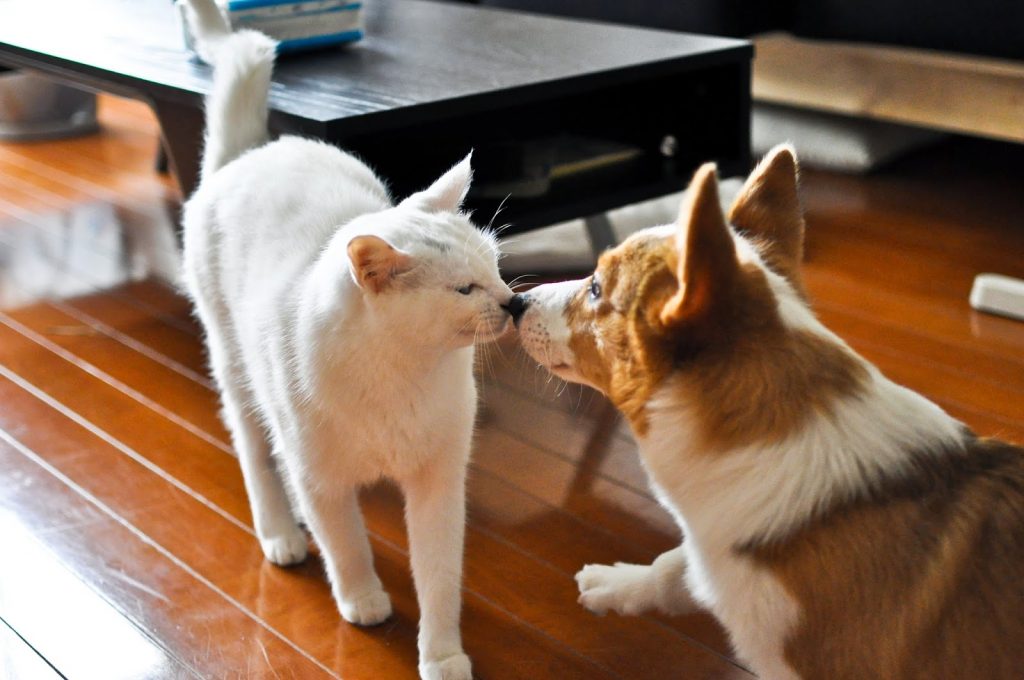
They are known to very friendly with quick and easy bonding to other family or neighborhood pets.
If both sides are tolerable of each other, there is a high chance that they become inseparable friends.
These canines bond well with friendly felines and see a playmate in each other.
At first, they need to be introduced slowly as they first access each other and then befriend.
Overview
Friendly, agile and loving are some of the words used to describe Pembroke Welsh Corgi.
They are short, sturdy dogs that were originally herding dogs can from Pembrokeshire, Wales.
They are lively and affectionate with quick bonding to other animals especially herd animals like horses and cattle.
They are smart, intelligent that attributes to their easy trainability and obedience.
They are ideal dogs as they are alert and have a loud bark of their size to alert against strange persons and animals.
They make a good choice of pets for apartment dwellers with daily exercise their only need.
Something Fun About Corgis!
- Queen Elizabeth owned up to 30 dogs till now and her last Corgi, Willow died in 2018.
- Pembroke corgi ranks 11th in the top 20 most intelligent dog breeds.
- In 2010 California had a First Dog, Sutter Brown after his owner, Jerry Brown took the Office of Governor.
- Corgis are suitable to be therapy dogs due to their affectionate and friendly nature.
This was all about the adorable dog breed from our side.
In case you have anything to add feel free to comment below.
Happy Petting To You!



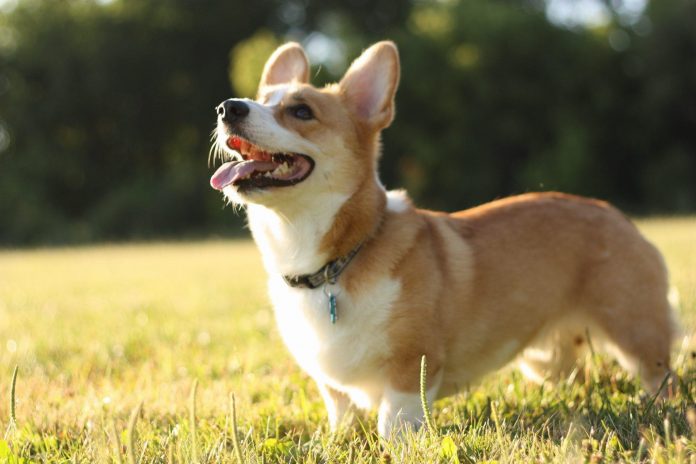









[…] Fearless and independent Pembroke Welsh Corgi is a happy-go-lucky […]
[…] I am Corgi and I love to pose for the […]